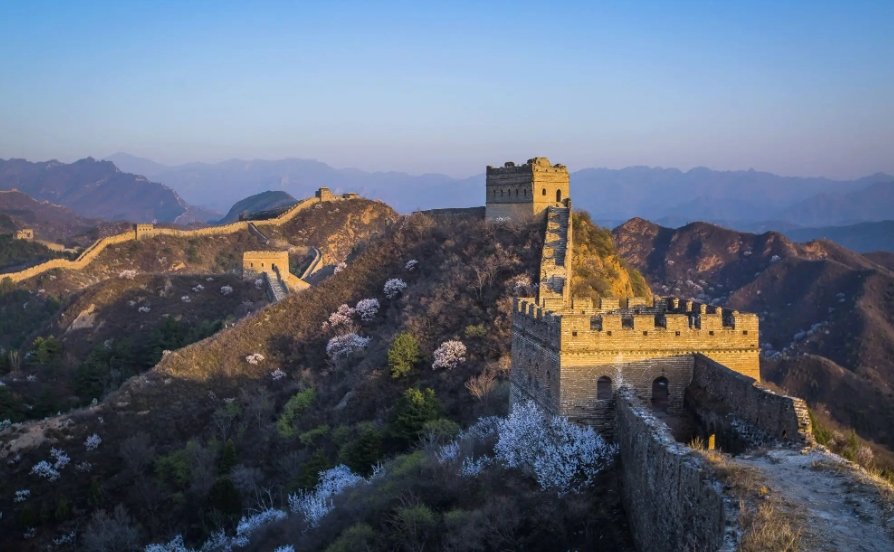
How Much of the Great Wall of China Is Still Standing?
The Great Wall of China, a UNESCO World Heritage site since 1987, is one of humanity's most impressive architectural feats. Snaking its way across mountains, deserts, and grasslands, this colossal monument evokes images of impregnable defense and enduring legacy. Yet, the question remains: how much of this once mighty barrier still stands?
The Myth and the Reality
The Great Wall was never intended to be a single, continuous structure. It evolved over centuries, comprising different walls, fortifications, and natural barriers built by various dynasties. Popular imagination often pictures an unbroken line stretching for thousands of miles, even fueling the misconception that it's visible from space. This, however, is a myth.
While the exact length of the wall has been a subject of debate, recent surveys, including those by Chinese archaeologists, suggest a total length exceeding 20,000 kilometers, incorporating all its iterations across history. However, only a fraction of this colossal construction remains intact.
The Crumbling Legacy
The Great Wall's current state paints a picture of contrasting realities. While some sections, particularly those near Beijing that have undergone extensive restoration, stand as testaments to their former glory, many others lay in ruins, ravaged by time, weather, and human activity.
Here’s a closer look:
-
Ming Dynasty Wall: Considered the most iconic and well-preserved, the Ming Dynasty wall, built between the 14th and 17th centuries, stretches for approximately 8,850 kilometers. However, a mere 8% of this section remains in good condition, with another 30% having vanished completely, leaving behind only faint traces.
-
Earlier Sections: Sections predating the Ming Dynasty, built with less durable materials like rammed earth and wood, have suffered even greater degradation. Many of these sections have eroded over time, absorbed back into the landscape they once dominated.
Factors Contributing to its Decline
The Great Wall's deterioration can be attributed to several factors:
- Natural Erosion: Exposure to centuries of harsh weather conditions, including wind, rain, and temperature fluctuations, has taken its toll. The wall's remote location, often in unforgiving terrain, further exacerbates these natural weathering processes.
- Human Activity: Sadly, human actions have also contributed to the destruction. Brick and stone theft for construction materials, vandalism, and the pressure from unchecked tourism have all played a role in damaging the wall's integrity.
- Lack of Resources: Preserving such a vast and geographically dispersed monument requires significant financial and human resources. While the Chinese government has stepped up preservation efforts in recent years, restoring and maintaining the entire structure remains a daunting challenge.
The Future of the Great Wall
Despite the challenges, there's a growing awareness of the need to protect this cultural treasure. Conservation efforts, fueled by national pride and international support, are underway, focusing on:
- Restoration Projects: The most visible efforts involve restoring crumbling sections, particularly those attracting tourists. These projects aim to recreate the wall's former grandeur while employing historically accurate techniques.
- Site Management: Regulating tourism and implementing sustainable practices are crucial for long-term preservation. Efforts are underway to limit visitor numbers, control access to vulnerable sections, and educate the public on responsible tourism.
- Community Engagement: Involving local communities in conservation efforts is vital. By fostering a sense of ownership and pride, communities can play a critical role in monitoring the wall's condition and reporting any threats.
The Great Wall of China, though not the unbroken monolith it is often portrayed as, remains an awe-inspiring testament to human ingenuity and perseverance. It is a reminder of our capacity to shape the world around us and the responsibility we bear in preserving our shared heritage for future generations. While a significant portion has been lost to time, the ongoing efforts to protect what remains offer hope that this iconic symbol will continue to inspire and captivate for centuries to come.
Q&A
1. Why is the exact length of the Great Wall of China debated?
The Great Wall isn't a single continuous wall but a complex network of segments built over centuries by different dynasties, with varying construction materials and levels of preservation. Determining what constitutes "the wall" and how to measure its fragmented remains contributes to the ongoing debate regarding its exact length.
2. What are the main threats to the Great Wall's preservation today?
While natural erosion poses a constant threat, human activities like brick theft, vandalism, and uncontrolled tourism significantly contribute to its deterioration.
3. How can I help in the preservation of the Great Wall of China?
Being a responsible tourist is key. Respect site regulations, avoid littering, refrain from touching or climbing on the wall, and support organizations dedicated to its preservation. Spreading awareness about the importance of protecting this cultural treasure is also crucial.